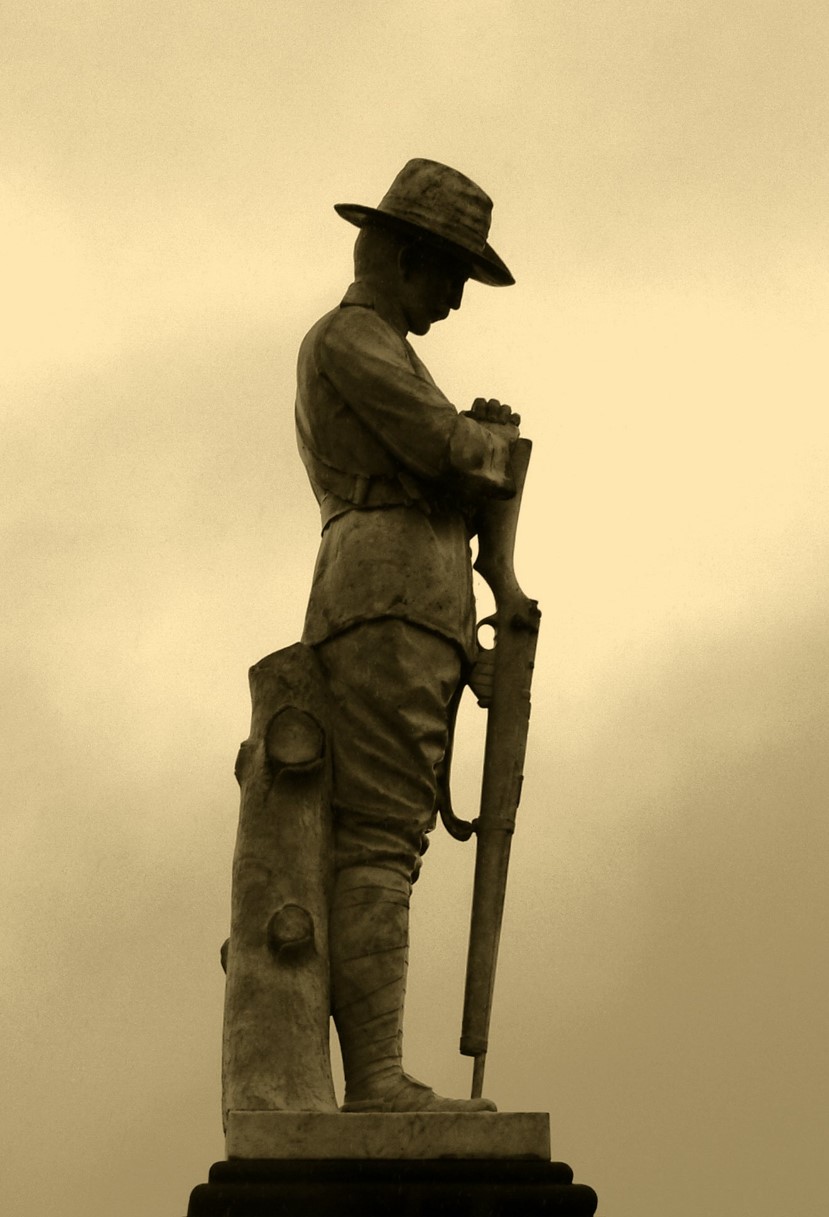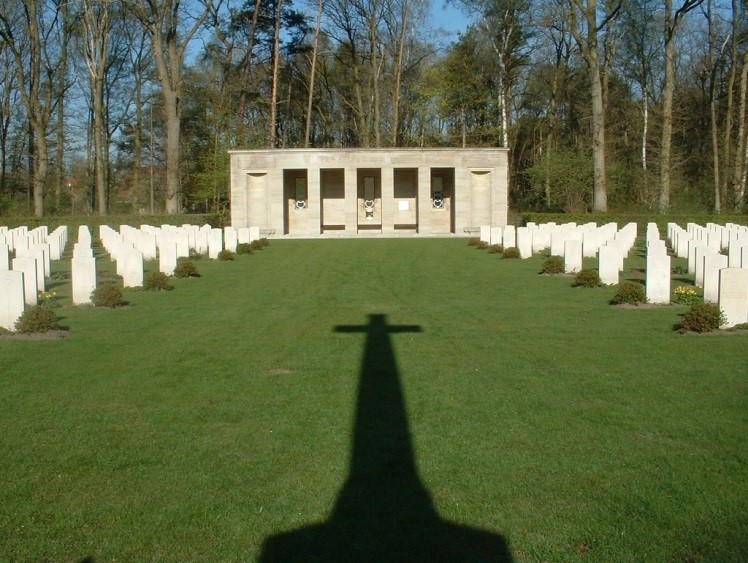Flight Sergeant Jack Findlay Thomas, the son of Philip Lewis Thomas and Annie Hodge Thomas (nee Findlay), was born at Toowoomba in Queensland on 15th October 1916. He was educated at the North Toowoomba Boys’ School during the years 1928 until 1930 and he then attended the Toowoomba Grammar School during the years 1931 until 1934. He left the Toowoomba Grammar School six months before completing his Senior certificate. Whilst a student at Toowoomba Grammar he served for four years in the Cadet Unit. After leaving school he entered employment as a Jackeroo/Sub-Overseer with the Toomaroo Pastoral Company in Western Queensland. He applied for aircrew training in the Royal Australian Air Force on 2nd May 1941. At the time of his application he was serving with the rank of Corporal in the Australian Imperial Force at Bathurst in New South Wales in the 8th Division Supply Column of the Australian Army Service Corps with the regimental number of NX57460.
Flight Sergeant Jack Thomas, at the age of was enrolled in the Citizen Air Force of the R.A.A.F. at No. 2 Recruiting Centre in Sydney on 24th May 1941 after giving a commitment that he would serve for the duration of the war and an additional twelve months. His physical description at the time of enlistment was that he was 5 feet 11 inches in height and weighed 174 pounds. He had a fair complexion, brown eyes and dark hair. He stated that he was of the Church of England religion. He gave his next of kin as Mrs Annie Hodge Thomas, residing at 9 First Avenue, Bishop Park, Toowoomba, Queensland.
Flight Sergeant Jack Thomas was allotted the service number of 411563 and he joined No. 2 Initial Training School at Lindfield in New South Wales on 24th May 1941 to learn the basics of service life. He joined No. 5 Elementary Training School at Narromine in New South Wales on 24th July 1941. He joined No. 2 Embarkation Depot at Bradfield Park in New South Wales on 19th September 1941 to prepare for movement overseas on attachment to the Royal Canadian Air Force for further training. He embarked from Sydney in Australia on 16th October 1941 and disembarked in Canada on 4th November 1941. After arriving in Canada he joined No. 3 Service Flying Training School at Calgary in Alberta on 7th November 1941. Upon completion of his training he was awarded the Pilot Qualification Badge and promoted to the rank of Temporary Sergeant on 27th February 1941. He joined No. 1 “Y” Depot at Halifax in Nova Scotia on 1st March 1942 to prepare for movement to England on attachment to the Royal Air Force. He embarked from Canada on 14th March 1942 and after arriving in England he joined No. 3 Personnel Reception Centre at Brighton on 28th March 1942.
Flight Sergeant Jack Thomas joined No. 3 (Pilot) Advanced Flying Unit at Royal Air Force Station South Cerney on 20th May 1942. He joined No. 15 Operational Training Unit at Royal Air Force Station Harwell on 30th June 1942 where he was trained for night bombing using Vickers Wellington aircraft. He was promoted to the rank of Temporary Flight Sergeant on 28th August 1942. He joined No. 9 Conversion Flight at Royal Air Force Station Winthorpe on 9th October 1942. He joined No. 1661 (Heavy) Conversion Unit at Winthorpe on 9th November 1942. He joined No. 9 Squadron at Royal Air Force Station Waddington for operational duty on 30th November 1942.
Flight Sergeant Jack Thomas was the captain and pilot of a No. 9 Squadron Royal Air Force Mark 3 Lancaster Bomber, ED477 that took off at 2349 hours on 30th January 1943 to attack Hamburg in Germany. His aircraft crashed at Ristedt, Germany on 31st January 1943 due to enemy action. Subsequent information received from German sources by the International Red Cross Committee at Geneva in Switzerland confirmed that he had been killed and that his body was buried in a cemetery for prisoners of war at Vechta about 35 miles south west of Bremen in Germany on 2nd February 1943. At the time of his death Jack Thomas was 26 years of age.
The positive identification of Jack Thomas’ remains and final resting place was not confirmed until 1950 when a final report from the Missing Research & Enquiry Unit investigated and exhumed the remains of the seven crew members of Jack Thomas’ Lancaster buried in the Vechta Cemetery. The following report was received by the Air Board in Melbourne on 13th February 1950:
The following extract from a long and complicated M.R.E.U. report described the crash of the aircraft:- “From eye witnesses in Ristedt the following information was obtained. At 0300 hours on 31st January 1943 a four-engined bomber approached the village from a westerly direction at a height of about 1,000 feet. The aircraft was already burning in the air. Within a few minutes the aircraft was seen crashing in the Ristedt Moor. Ristedt Moor is a pasture land belonging to a farmer by the name of Jakob of Ristedt. Since there were no explosions to be heard, it was assumed at the time that there were no bombs aboard the aircraft when it crashed. As the aircraft hit the ground the flames were intensified and the aircraft continued burning for a few hours. The remains of the wreckage were removed several days later by a German Air Force Salvage Unit from Vechta”. Seven bodies were recovered and buried by the Germans in 4 graves in Vechta Cemetery and when exhumations were eventually carried out Sergeant Hover was identified and reburied in Rheinberg Cemetery. It is not known why the Graves Concentration Unit concentrated bodies to both Rheinberg and Oldenburg, but on the evidence of R.A.A.F. uniform and “Pilot’s brevet”, Plot X, Row D, Grave 11 in Oldenburg has been accepted for and registered in the name of Flight Sergeant Thomas.
Flight Sergeant Jack Thomas’ remains were finally laid to rest in the Sage War Cemetery. For his service during World War 2, he was awarded the Pilot Qualification Badge, the 1939/1945 Star, the Aircrew Europe Star, the Defence Medal, the War Medal and the Australian Service Medal 1939/1945. His name is commemorated on Panel No. 131 at the Australian War Memorial in Canberra and locally on the Toowoomba Grammar School World War 2 Honour Board.
Toowoomba Grammar School archive records show that he enrolled as a day student on 29th January 1931 and he left the School on 28th September 1934. His parent were shown as Mrs P.L. Thomas of Drayton. He passed the Junior examination in five subjects.




